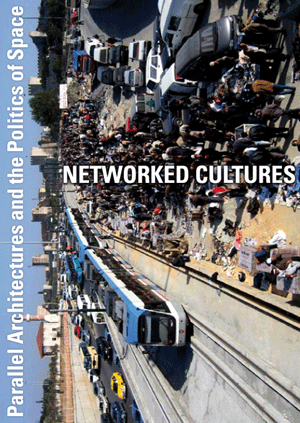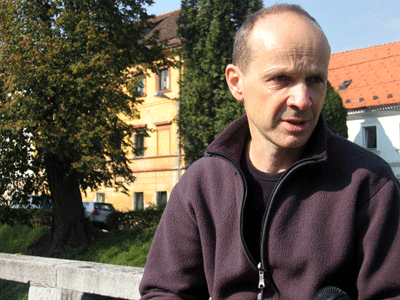_loginregistrieren_database_5 Factories - Worker Control in Venezuela Dario Azzellini & Oliver Ressler _ALMOSTREAL ECF _AnArchitektur Jesko Fezer _Arizona Road Azra Aksamija _Balkan Konsulat rotor _Bata-ville: We are not afraid of the future Nina Pope + Karen Guthrie / www.somewhere.org.uk _Black Benz Race krcf in collaboration with Felix Stalder, Arben Gecaj, Faton Topalli and Osman Osmani _Black Sea Files Ursula Biemann _Camp La Jolla Military ParkOwen Mundy _CHANGE REALITY: Renaming the Streets of Zagreb REINIGUNGSGESELLSCHAFT _Conceptual Paradise. There is a place for sophistication Stefan Roemer _de-regulation Irit Rogoff, Kutlug Ataman, Stefan Roemer_news ____________Bloomberg SPACE, London ____________Kumu Art Museum Tallinn ____________Open Space, Open Systems - Vienna ____________CAA 2011 Conference, New York ____________Forum Stadtpark, Graz ____________Symposium, Istanbul ____________lungomare, Bozen/Bolzano ____________Metropolis Biennale 2007-17, Copenhagen ____________new publication available now ____________Mestna Galerija, Ljubljana ____________Livestream of Networked Cultures documentary ____________ |
_ConversationsTadej PogacarP.A.R.A.S.I.T.E. Museum of Contemporary Art
Tadej Pogačar
PM/HM: P.A.R.A.S.I.T.E Museum is a virtual museum and was initiated in 1993, at a time when physical sites in the Balkans were highly contested. You proposed something that happens without proper physicality. What was the concept behind this move? Tadej Pogačar: We can describe P.A.R.A.S.I.T.E. Museum as a notional, parallel art institution, a mobile spiritual entity that establishes specific interrelationships among a variety of subjects, societies, institutions, social groups and symbolic networks. The P.A.R.A.S.I.T.E. Museum of Contemporary Art doesn’t have its own premises or staff, but rather adopts territories, chooses different spaces and feeds on the juices of other institutions. As a “parallel art institution” it serves as a critical model for analysing the systems and the institutions within it, and as a framework for the introduction of alternative forms of communication and the establishment of new connections. Its operations are not based primarily on the production of objects, but on the creation of situations and the cultivation of relationships. Our early interventions in museums raised questions about order and knowledge: How are they produced and structured? How are they possessed, transmitted, and used? Another, closely related issue was that of social visibility: we question what we see and what we fail to see, what we consider “natural” and what we find disturbing. We’ve intervened in art museums, permanent and private collections as well as history and natural history museums, etc. Over the years we have evolved our own operational strategy called “new parasitism”. It can be described as a subtle deconstruction of the horizons of the everyday and a relentless challenging of the social systems used to establish centralising forces, dominance, and power in everyday life, art and society. We remix, appropriate, redirect and confound recent states and orders. Some interventions have questioned the order and hierarchy of institutions; others, their ideologies and the hidden logic of their collections. An example: in a cultural institution in Ljubljana (which was temporary declared a P.A.R.A.S.I.T.E. Museum site) we prepared - in addition to an exhibition - an official meeting with the entire staff in order to introduce me as their new director. They were also informed that for the next month they would have to follow new rules and orders, for they were now employees of P.A.R.A.S.I.T.E. Museum. Of course they found this confusing… PM/HM: You have produced a series of works on human trafficking and sex work in which you collaborate with far less institutionalised groups. How did this engagement with marginalised communities come about? Tadej Pogačar: In the mid-1990s our interest shifted more to the city, especially to urban minorities and public space: uncoded spaces, non-spaces, appropriation of public space, etc. We introduced collaborative ways of working based on equal partnerships. In 1999 we initiated the project CODE:RED as an ongoing collaborative, interdisciplinary platform for discussion and research into models of self-organisation of urban minorities, global sex work, and human trafficking. This platform uses both real and virtual spaces, and takes the form of an open dialogue between artists, sex workers and the public in selected urban environments. CODE:RED employs various forms of public action, activism and subversions in media. It is clear that contemporary society still draws a sharp line between the groups it sees as inside society and those it views as outside. In order to survive, those excluded are forced to organise themselves and how they do so is radically different from those whose identity is part of a “legitimate” social structure. Urban minority sex workers are among those excluded. They have no basic civil or human rights. In many countries their work is not recognised as work at all. They are stigmatised, victimised and brutalised. They must organise and raise their voices if they want to survive. After the fall of the Berlin Wall, we experienced a massive flow of migrant prostitution into Western Europe. The Western countries were not prepared for this new situation. Countries that had developed an advanced policy towards sex work over the previous decades found themselves in a dilemma: due to the changed conditions of the new global economy, their legislation turned out to be outdated and useless – a situation that brought on a new state of chaos. The World Congress of Sex Workers and New Parasitism in 2001 was the first public manifestation of the CODE:RED project. This project emerged as a consequence of our co-operation with Comitato per i Diritti Civili delle Prostitute from Pordenone, one of the leading organisations for the protection of sex workers in Italy. It took place within the framework of the 49th Venice Biennale in a public space, a tent, at Giardini and was called Prostitute Pavilion (Padiglione delle Prostitute). The congress was conceived as a creative platform for connections, exchange and information. The list of the participating groups and organisations included group activists and individuals from Taiwan, Thailand, Cambodia, Vietnam, Italy, Germany, USA and Australia. Another recent interesting joint project is CODE:RED Brazil, Daspu, initiated in collaboration with Davida. Davida is a non-profit organisation founded in Rio de Janeiro in 1992 to promote the inclusion of prostitutes as citizens. The main tools of the Davida group are actions and interventions into the fields of education, health, documentation, communication and culture. In 2005 it established a fashion brand called Daspu. In less than a year this fashion brand became famous, nationally and internationally. Beside prostitutes, young designers and internationally renowned models joined to collaborate on the project. This is a true success story. Since then we have done projects with different groups from New York, Tirana, Madrid, Graz, Pordenone, Berlin, etc. PM/HM: How do you feel about the strange blend of optimistic interest in transitional spaces that are characterised by self-organised networks on the one hand, and the resurgent obsession with specific geographies on the other? Tadej Pogačar: In the heroic age of the Internet, optimism surged. ljudmila (lubljana digital media lab) in Ljubljana was an important place for the international net art community. Yet reality once again caught up with us: we were being too idealistic when we ignored the basic rules of geography and politics underlying such locations. The art market is hungry and needs to rediscover Russia, China, Finland and even the Balkans. Without exception, recent shows from the Balkans have reflected Western stereotypes and prejudices; they do not give a proper picture of cultural production in the Balkan region. Yet there are still small, individual and self-organised initiatives in South America, the United States, Eastern Europe, Asia... They have not forgotten what notions like cooperation, the past or solidarity mean. What is more, they work locally and this makes it possible to change and improve local conditions. Once more I’d like to emphasise: for us strategies of mobility and adoptability are very important - like parasites in nature, we have to be small and clever to recognise hidden channels and paths through diverse territories.
|
_broadcasts_conversations+ Ana Dzokic and Marc Neelen+ Ayreen Anastas and Rene Gabri + atelier d'architecture autogérée (aaa) + Asya Filippova + Sophie Hope and Sarah Carrington + Branca Curcic + Christoph Schaefer + Campement Urbain + Claudia Zanfi + Despoina Sevasti and Poka-Yio + Erden Kosova + Helmut Batista _textsRadio as Spatial Practiceby: Paulo Tavares Survival Kits: Artistic Responses to Globalizationby: Marga van Mechelen What Ever Happened to Cultural Democracy?by: Sophie Hope I don't know how to explain ...by: Anca Gyemant Trading Placesby: Peter Moertenboeck & Helge Mooshammer Milosevic as Architectby: Srdjan Jovanovic Weiss When the Unavoidable Knocks at the Door ...by: Gulsen Bal Tracing Translocality: The BlackBenz Raceby: Felix Stalder travelling lexicon towards a global positioning systemby: Celine Condorelli |
